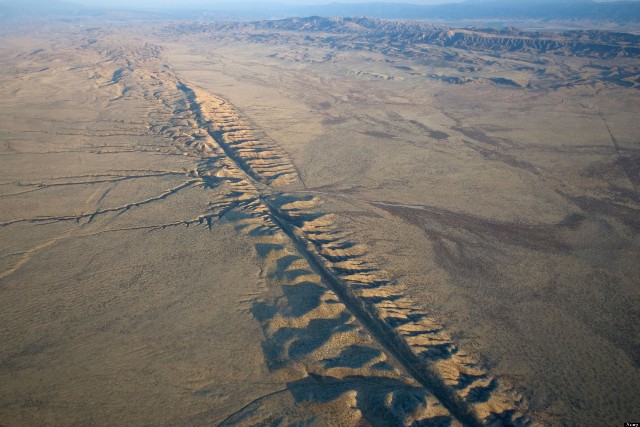Earthquakes & Fault Lines in Northern California 3/24/18
 |
| San Andreas Fault Link |
This week in science I learned about earthquakes and fault lines and more specifically in northern california. What I now know about this topic is what a fault is, what an active fault is, why an active fault is a hazard, certain active faults in northern california, and recommendations for people who are living near active faults. A fault is a fracture in earth's crust created by a transform plate boundary. An active fault is a fault that has moved in the past 120,000 years, though it isn't insanely dangerous. A fault that has moved in the past 5,000 years is also considered an active fault, just a much more dangerous fault. Active faults are a hazard because active faults are what create an earthquake. An earthquake can ruin someone's life, or even do worse such as take a life. An active fault can simply affect your life for the worse with just an instant movement., which is why active faults are so hazardous. There are many different faults in northern california, but the most notable and dangerous faults in northern california are the San Andreas Fault and the Hayward Fault. The San Andreas Fault stretches for about 750 miles and has created some of the most famous earthquakes in California. One earthquake that it has created is the 1906 San Francisco Earthquake and the 1989 Loma Prieta Earthquake that hit during the World Series. The Hayward Fault is one of the biggest faults in California and has caused $350,000 worth of damage in San Francisco alone. There are two main recommendations for people living near active faults. The first recommendation is to have a survival/AID kit just in case an earthquake does hit. The other recommendation is to simply not live near an active fault. As said above, active faults can be very dangerous, and to completely stop an active fault from hurting you, you can simply just not live near one, and it won't be a problem anymore.
S&EP 6-Constructing Explanations and Designing Solutions:
This week in science I designed a solution to a problem when I found the problem of living near active faults, and found a way around it. Living near active faults can be very dangerous and you should always make sure to protect yourself from danger (an earthquake) caused by an active fault. There are two solutions to the problem of living near an active fault. One is to create an AID kit so that when or if an earthquake occurs, you can be prepared for anything. AID kits should consist of food, water, money, and any other necessities that you would need after an earthquake. The other solution is to simply just not live near an active fault. If you don't live near an active fault, then earthquakes and any other possible danger created by an active fault will not be a problem anymore. So this week in science I found the problem of living near an active fault and designed a solution for it.
XCC-Cause and Effect:
The cause and effect relationship I found this week was between transform boundaries, faults and earthquakes. The cause is transform boundaries and faults, the effect of this is earthquakes. Transform boundaries are when two plates slide past each other creating a fault. This type of movement from the active fault creates an earthquake. The cause of earthquakes are from transform boundaries along a fault. This is the cause and effect relationship I found this week in science between transform boundaries, faults and earthquakes.
Multiplier-Learner:
This week in science I was a learner because I was consistently wanting to know things. I already knew about earthquakes and transform boundaries. But I did not know about what faults and active faults were, why active faults are hazardous, active faults in northern california, and how to prepare for earthquakes caused by active faults (recommendations for people who live near active faults). I knew that in order for me to do well on the Plate Tectonics Project, I would have to know a lot about active faults, especially in northern california. So I was consistently trying to find and understand unknown information. I was constantly thinking, "I want to know..." as I was researching. This is why this week in science I was a learner.
Comments
Post a Comment